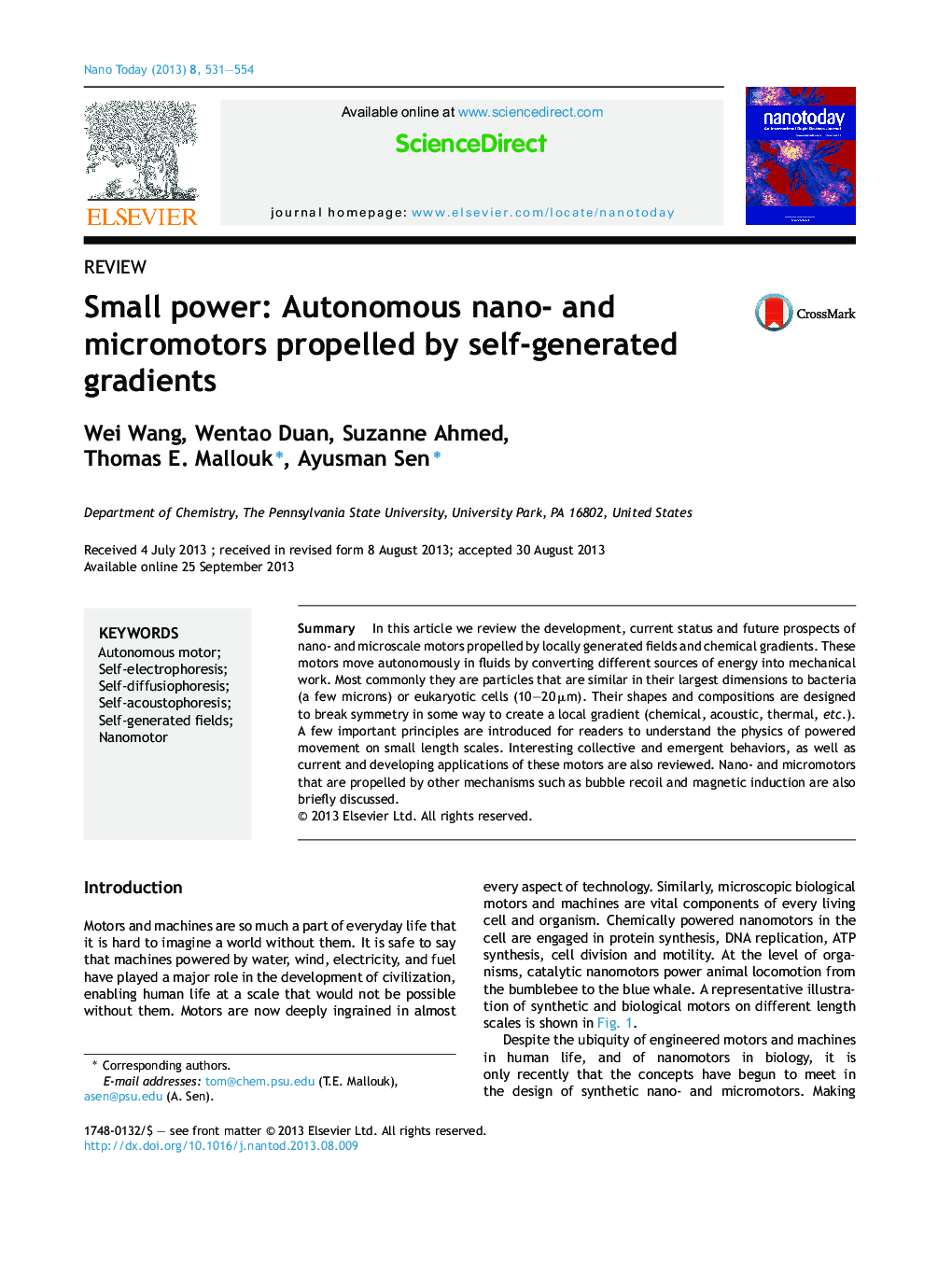| Article ID | Journal | Published Year | Pages | File Type |
|---|---|---|---|---|
| 32394 | Nano Today | 2013 | 24 Pages |
•Autonomous nano- and micromotors are particles that convert energy locally through symmetry breaking.•These motors operate in the low Reynolds number regime through several propulsion mechanisms.•Functionality such as steering and cargo pick up/delivery can be incorporated into micromotors.•Synthetic motors exhibit collective behavior that is mimetic of living microorganisms.•Several applications are emerging in biochemical analysis, microfluidic pumping, particle sorting, and assembly.
SummaryIn this article we review the development, current status and future prospects of nano- and microscale motors propelled by locally generated fields and chemical gradients. These motors move autonomously in fluids by converting different sources of energy into mechanical work. Most commonly they are particles that are similar in their largest dimensions to bacteria (a few microns) or eukaryotic cells (10–20 μm). Their shapes and compositions are designed to break symmetry in some way to create a local gradient (chemical, acoustic, thermal, etc.). A few important principles are introduced for readers to understand the physics of powered movement on small length scales. Interesting collective and emergent behaviors, as well as current and developing applications of these motors are also reviewed. Nano- and micromotors that are propelled by other mechanisms such as bubble recoil and magnetic induction are also briefly discussed.
Graphical abstractFigure optionsDownload full-size imageDownload high-quality image (94 K)Download as PowerPoint slide
